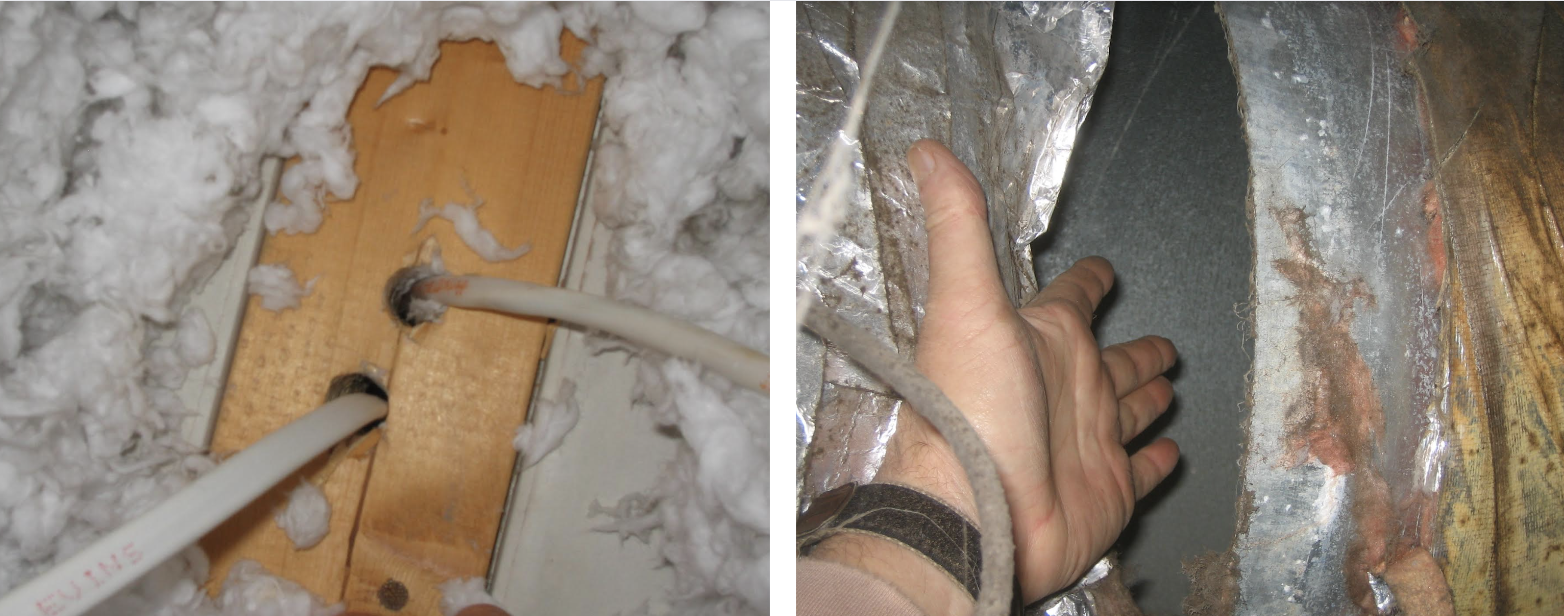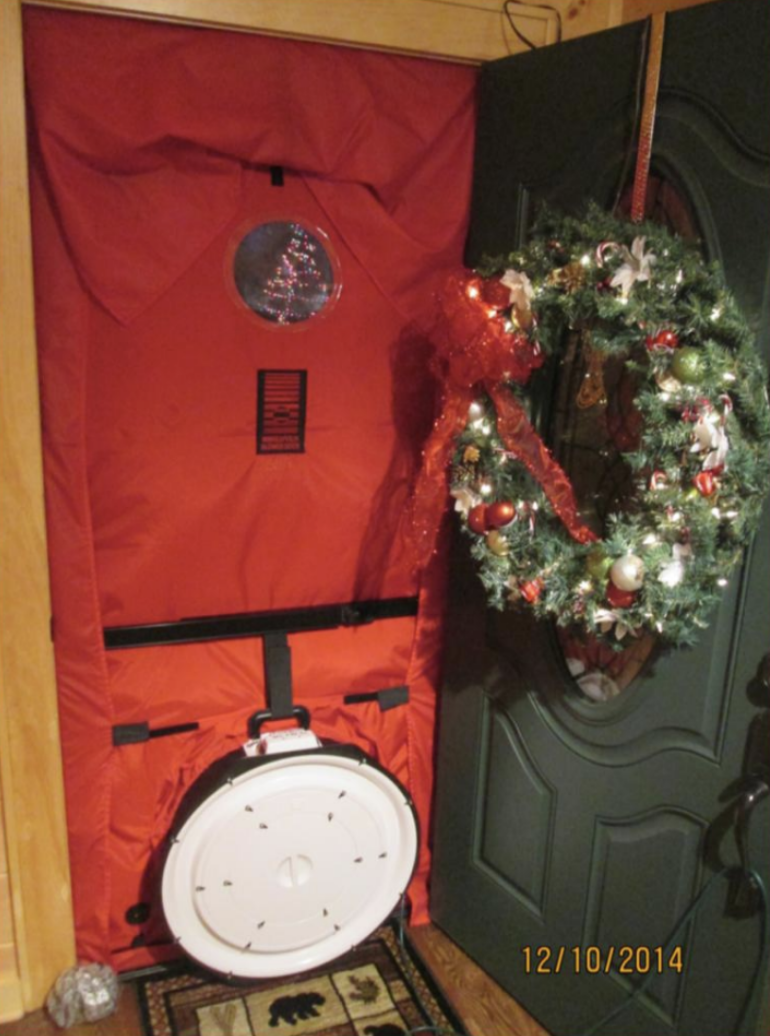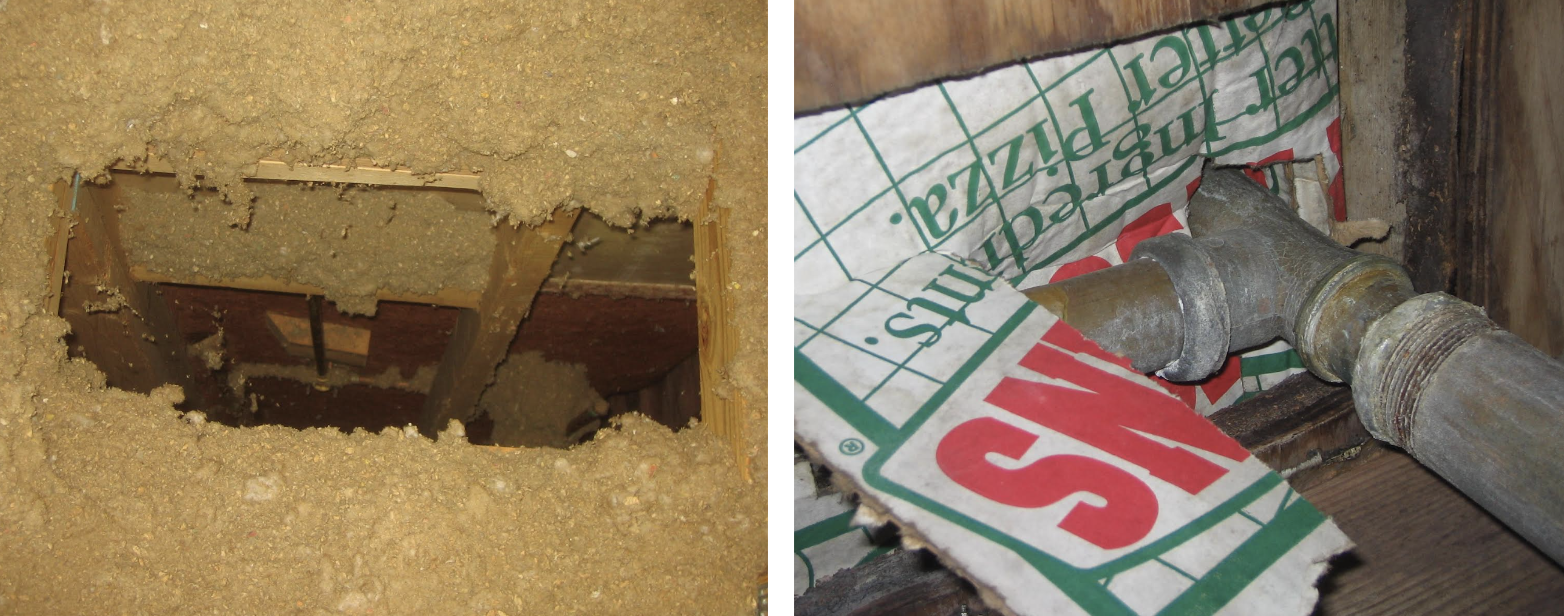No one wants their money flying out a leaky window, but professional energy auditor Bruce Glanville says nearly every home has energy inefficiencies costing residents money and quality of life. Luckily, a home energy audit can set these homes on the right track – and often save homeowners over 35% on their utility bill.
Reed Winckler | January 22, 2024 | Clean Energy Generation, Climate Change, Energy EfficiencyWith snow on the ground in much of the Southeast this January, it’s not hard to imagine that it’s 30 degrees outside and you’re trying to keep your home warm without skyrocketing your energy bill. Your HVAC is pumping out more than enough heat, but your bill continues to climb, as if a large window in your home has been left open with all your warm air spilling out.
Bruce Glanville of Knoxville, Tennessee knows that it’s not uncommon for a home to act as if a window is open all the time – as a home energy auditor he knows all too well how hidden energy efficiencies like leaky ducts and doors can have the same effect. Bruce has been a certified home energy auditor for 18 years, and he’s observed that every house, old or new, has an energy-wasting surprise.
Bruce also knows that patching up leaks and making other home improvements can not only save you money on your utility bill – it can substantially improve your and your family’s health and comfort. The first step to making efficiency upgrades for a cleaner home is to participate in a home energy audit, where a certified professional like Bruce enters your home and creates a step-by-step plan to help you improve its energy efficiency – from DIY fixes or finding trusted contractors, to financial rebates that can alleviate the cost of suggested improvements.
Plus, there’s never been a better time to participate in a home energy audit and make energy efficiency improvements to your home thanks to many tax credits and rebates available through the federal Inflation Reduction Act.
If a home energy audit sounds daunting, you’re not alone. Read on as we ask Bruce about the process of an audit, how you can keep your family healthy while saving money, and how to get started.
Why an Energy Audit?
Why should we identify potential energy leaks and inefficiencies in our homes? What financial benefits are there to weatherizing?
When you look at the number of homes in this country, the savings really become significant. Every house has a surprise, especially due to the lack of code enforcement in many areas.
If a homeowner is paying their utility $4,000 a year and they get a weatherization job done – and they do the work as recommended – I can guarantee a 35% savings. If the house is rough, it could be 50% and the homeowner would only pay $2,000 after weatherization. That doesn’t seem like a whole lot on a house-by-house basis, but if you’re looking at 100 million homes, you’re talking a lot of money – it’s a cumulative effect.
Recently we’ve seen that beyond the energy savings are the health benefits.
Weatherization and home energy upgrades can make it so a child goes back to a health home, and the family not only pays less for energy, they pay less for health care.
Explain the additional health benefits that can come from weatherization.
Data from the last three years shows that weatherization can help you save money on health care just as you do on energy savings, especially in lower-income households.
A lot of this data comes from real-world, local observations. The Tennessee Valley Authority (TVA) issued grants for low-income weatherization about five years ago, and the City of Knoxville was able to weatherize 1,200 homes, all of which saw improvement in energy usage. Later, homeowners that participated in the program were interviewed about how the weatherization had improved their lifestyle, from asthma triggers to loss of work.
In monetizing the homeowners’ health benefits, it was found that they provided three to five times greater savings than energy savings. Take for example a family of five with an asthmatic child who triggers once a month due to air leaks in the house. If they have to spend the whole day in the ER, researchers estimate that on average they might spend somewhere around $1,500. Then, the family is sent back home to the same unhealthy environment.
The message that we’re trying to get out is that weatherization and home energy upgrades can make it so the child goes back to a healthy home, and the family not only pays less for energy, they pay less for health care: less visits to the emergency room, fewer days missed at work or at school, and an overall better lifestyle.

What To Expect With A Home Energy Audit
Walk us through a potential home energy audit – what should a homeowner expect?
A comprehensive energy audit includes a series of tests and a thorough examination of the building, then calculations to determine the priority list – what should be done first, second, and third – and then recommendations for people that are qualified to do the work.
A full-blown energy audit usually takes two to three hours. There’s a lot of photography: I take pictures of every aspect of the house and go into every room, including crawlspaces and non-air-conditioned attics and basements, where energy and health issues are usually the most evident. The idea is to collect as much data as possible to show the homeowner how the building is running. Some aspects I look for are:
- How old are the appliances?
- Are the seals on the refrigerator and freezer good?
- What kind of lighting do you have: LED, CFL, or incandescent?
- Are the windows double-paned or single-paned?
- Is there a stormwater drainage issue?
- Do you have a combustion issue? Are your dryer and water heater in one room causing a backdraft of carbon monoxide into the house instead of out the exhaust?
Testing for Air Leaks
An essential part of the audit is a blower door test to help determine the home’s airtightness, or how much air is leaking to the outside. For example, this test might tell you that your house is losing its entire volume of air to the outside twice an hour, which means that your heating and cooling system has to heat or cool the entire house two times the normal amount just because of leakage. It only takes about 20 minutes once set up and is not particularly invasive. A good program will come back and do additional blower door tests after weatherization.

Depending on the condition of the house, I might do a duct leakage test. More extensive than a blower door test, I tape off all the registers and hook a fan up to a return vent to measure your air ducts’ total leakage throughout your house, and the amount of air being lost into the crawlspace or the attic where the ducts are. I might also use a tool called a manometer, which measures the leakage in a single room compared to the rest of the house, which can help stop backdraft from a furnace.
Making Recommendations
Next, I do a software analysis of the building. I install the home’s dimensions, volume, insulation, and more into a software program, and it spits out a number that tells me the load on the house, which helps me form a report on what you need to fix and how to do it.
My recommendations usually start with sealing air leaks in your house, fixing leaks in your duct system, and addressing insulation problems after the leaks are fixed. These first three – air sealing, duct sealing, and insulation upgrades – can usually be done for less than about $4,000 in a typical 3,000 square foot house and have a significant impact on your quality of life. Further down the road, because they are more expensive, you may want to consider installing new windows and new heating and cooling systems.
I always start by giving the homeowner a priority list and explain that very few people can do every suggested upgrade at once. From there they get their report, their pictures, and recommendations of who they might want to hire, or if they’re a DIY kind of person, what to use.
In terms of having someone in your house, it’s not a whole lot different than having a cleaning service. They’re going to look in your closets, go in your bathrooms. The only difference with what I do is I spend a lot of time in the attic and crawlspace.

What is the difference between a home energy evaluation from a homeowner’s utility company versus an energy audit?
The main difference is that a utility evaluation lacks the testing – no blower door test, no duct test. Here in Tennessee, we have the E-Score Program (or EnergyRight). TVA sends an auditor out at the homeowner’s request to do what’s called a walkthrough energy audit. They don’t do any testing, they just go through and look. What they see – broken duct, bad insulation – goes into a report for the homeowner, a list of improvements to make and a list of contractors that are vetted by the utility.
It doesn’t go far enough, as far as I’m concerned, but it’s a really good program and is essentially free as it’s subsidized by the utility. There are similar programs from other utilities across the country, so you can check with your utility provider for a more basic assessment like this.
How does a homeowner schedule an energy audit? What should a homeowner look for to know auditors are certified and experienced in conducting home energy assessments?
To a limited extent, you can do a web search, but the risk is that the first options you find listed are the ones who spent the most money on search engine optimization, not necessarily the best auditors.
So, look for two certifications when searching for an auditor:
- Residential Energy Services Network (ResNet) – a compliance-based provider of standards for energy audits with two arms, one for weatherization and one for new construction.
- Building Performance Institute (BPI) – another energy management group that sets standards for how to perform tests and more. They are less prolific in the South since they are New York-based, but they are growing.
Beyond that, in some areas, you can call your code compliance office and ask them if they have anybody on their list doing residential energy audits and testing for code.
JOIN THE CLEAN ENERGY GENERATION
None of us wants our money flying out a leaky window, but the truth is that nearly every home has energy inefficiencies that are robbing its residents of not just money, but quality of life. A trusted home energy audit is a great way to learn more about your home, make a positive change for you and your family, and take action as part of the Clean Energy Generation.
With tax incentives and rebates from the federal Inflation Reduction Act available to homeowners across the Southeast, there’s never been a better time to take the first step towards making energy-saving improvements to your home.
As climate change increases the frequency of severe winter weather here in the Southeast, members of the Clean Energy Generation are advocating for cleaner, safer energy that will protect our families and communities – and that starts with upgrades to our own energy efficiency. Let’s envision a brighter future we all deserve – and together, we can make it a reality.
#CEGMemberStories